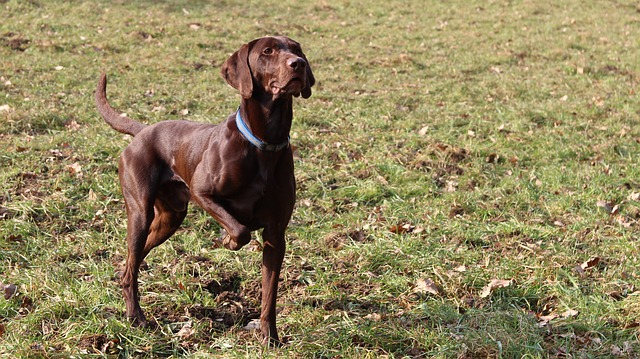
the scientific study of pet nutrition by veterinary nutrition specialists and experts.
The Skinny on Fat: Part 1 – The Basics

Fat is one of the most common nutrients that I end up talking about with pet owners and other veterinarians, and one of the nutrients that I feel is often misunderstood. In this 2-part series, I’m going to try to demystify fat a bit and help you better understand this important nutrient. In this post, we’ll cover the basics about fat in general, and in the next we’ll talk about different types of fat and their relationships to an important topic – inflammation.
Let’s start at the beginning – the calories in pet food are made of up of varying amounts of protein, fat, and carbohydrates. As protein and carbohydrates are similar in calories (both 4 Calories per gram), increasing or decreasing fat (which is 9 Calories per gram) is usually what makes some pet foods higher or lower in calories than others. The amount of fat in pet food varies quite widely. Pet foods typically range from 25-60% of calories from fat with dry dog foods starting out on the lower end while canned foods and commercial raw diets (which we do not recommend) are usually on the higher end.
One common point of confusion for pet owners is that the numbers that you find on the pet food label are not a reliable way to assess whether a diet is low, moderate, or high in fat because these numbers represent the percent by weight of fat in the food, not the percentage of calories. To get a better idea of the amount of calories coming from fat like on the Nutrition Facts labels for our food, you’ll need to use a converter (you may need to contact the food manufacturer to get the numbers for ash, which may not be on the label). Using the converter, we see that the dry food that says 20% crude fat minimum actually provides over 40% of calories from fat – not a low fat food at all! The numbers will be even more different for canned foods – a diet that says 9% fat on the label may actually contain over 60% of calories from fat!
Does the amount of fat in your pet’s food matter?
Fat is an important nutrient for your pet – it provides energy, insulation, cushioning, and has many other important roles in animals’ bodies. Both too little and too much fat can cause health issues in dogs and cats.
One common myth about fat and pets is that high fat diets can cause heart disease. High fat diets, especially those high in saturated fat, have been associated with clogging of arteries and heart attacks in people. However, healthy dogs and cats do not get this kind of heart disease, so there is no need to restrict fat to prevent it.
There are some other health conditions in both dogs and cats where lower fat diets (typically less than 25% fat calories) can be beneficial, though. Pancreatitis in dogs has been associated with eating a lot of high fat food, particularly in animals that aren’t used to eating these type of foods or diets. That said, many dogs can eat high fat diets and never develop pancreatitis and many dogs that develops pancreatitis do not have a history of eating a high fat diet. If your dog has had pancreatitis, ask your veterinarian whether she should be fed a lower fat diet.
High fat diets are also poor choices for overweight or low energy cats and dogs; fat is so high in calories that they can’t eat very much of a high fat food without getting too many calories. Some dogs don’t tolerate high fat diets well and will get diarrhea. In general, dogs with gastrointestinal issues, a history of pancreatitis, diabetes, or high levels of fat in their blood may benefit from lower fat diets. For dogs that need less fat than is available in diets at the local pet supply store, there are therapeutic diets from veterinarians that are even lower in fat. Cats are generally more tolerant of higher fat diets than dogs and so there are fewer low fat diet options available for cats, either at a pet store or from a veterinarian. Most of the available lower fat diets for cats are designed for weight loss.
So far we’ve talked mainly about reasons to feed a lower fat diet. When might you purposely look for a higher fat diet? Higher fat diets, because they are high in calories and usually taste really good, can be good options for thin, extremely active (e.g. hunting dogs, sled dogs, police or military dogs), or picky dogs or cats. Most diets for pregnant or nursing pets will be higher in fat because these pets have much increased energy needs compared to regular adult dogs or cats. High fat diets can also make the coat really shiny and are commonly used in pets that participate in dog or cat shows (although many of these animals are overweight!). Higher fat diets are also used for certain health conditions when a pet needs to eat a lower protein or carbohydrate diet – the increased fat replaces protein or carbohydrate calories and can help encourage a sick pet to eat.
Stay tuned for our next post when we discuss essential fatty acids and inflammation!
Want to read more information on feeding your pet?
Subscribe to always know when we add new material!
Recommended Posts

Can Diet Help With My Dog’s Seizures?
January 18, 2024

The Most Popular Holiday Foods…That Your Pet Should Avoid!
December 08, 2023

Veterinarian Recommended Pet Foods: What You Need to Know
November 05, 2023

